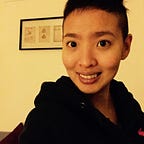Designing a space for self-directed learners
documenting the rough ideas
Most existing infrastructure for education is catered towards traditional learning, and as a self-directed learner, I have often found such learning experiences limiting and frustrating. Similar frustrations were voiced in conversations:
- being told what we can learn and what we cannot learn
- whatever we can learn, we have to learn it in a very particular manner, from a very specific set of lenses
- teachers, if not institutions, make or break the learning experience
Github has made a considerable impact on the programming community, by giving them a space to amplify the features of open-source movement:
- anyone can be a part: they can be a five year old or an eighty year old from anywhere in the world with internet access
- easily browse someone else’s open-source code and/or act on it
- someone can easily provide feedback
- connect to like-minded people
What if there was something similar for education? A space where anybody can be a part of, share their learning experiences, and structure their own paths?
Imagining the space
Without being too prescriptive yet about how it will converge or evolve, these are some abstract ideas:
Unstructured and non-linear
Most traditional learning journeys are structured in a very specific, deliberate manner, often designed to progress in terms of complexity. Self-directed learners may want to learn according to what provokes our curiosity instead, and that may mean starting from the middle and proceeding to pick out material in order of interest instead of what is being defined by a typical structure.
Design and curate our own learning experience
Related to the point above, we want to be able to decide how we want to learn, what is important to learn, how much we want to learn.
Tap into the collective wisdom
We want to learn widely and deeply, and that involves trying to access as much information as possible, from the widest variety of sources as possible. Somebody unexpected may suggest obscure that may never make it into a mainstream course but it may be a collective deep-learning experience for a few like-minded people.
Anyone can learn as a peer
The most ideal scenario will be a five year old learning astro-physics with a seventy-eight year old, with an astro-physicist providing feedback as they go along. Is that absurd? But why not?
Include the best learning sources: people and places
Apart from theory, people and places are the greatest sources of information. Imagine learning art history and being able to communicate with art historians, or get suggestions from the learning network where to visit in order to have an experiential learning experience.
Display connections and context
The fascinating thing about learning is that each learning node is connected possibly infinitely to others. An example:
…history-art-philosophy-politics-economics-sociology-psychology-neurology…
So, how can we visualize this network of relationships?
Allow for divergence or depth anytime
At any given point in the learning experience, we can diverge into a related subject or go deeper into the existing subject, with visible signposts to what is possible next.
Magical sorting
Any extensive network comes with a great amount of noise. Being able to find what we need with any given context from the widest sources possible is a huge challenge. I have not thought this through yet, but I imagine this to be a weightage compromising of relevancy, peer ratings (users of the same network), social-network relationships (people we know) coupled with other less obvious engagement metrics.
What’s Next
I have no idea yet. I am committed to a non-linear, experimental process, perhaps the ideas will evolve with time, perhaps some of you will give feedback. Some of the possible next steps:
- Share some of my terrible sketches
- Tighten the above abstract ideas into a feature set
- Illustrate a possible user experience
- Publish a v2 of this document
This is part of an experiment: making anything I want for a year. I am intending to document the process publicly and open-source the resulting work. Follow “The experimental year” for updates. I want to embrace the vulnerability of sharing something in-progress and see how it evolves.
